- Home
- Equipment Reviews
-
Amplification Digital Integrated Mono Block Preamplifier Phono Solid State Tube Analog Sources Cartridges Tape Tone Arms Turn Tables Digital Sources Digital Disc Players DACs Music Servers Streaming Music Services
-
Accessories Power Conditioners Room Accoustics Racks & Stands Audio Software Other iPod iPod Speakers iPod Headphones iPod Transports Headphones Over Ear On Ear In Ear Headphone Amplifier
-
- Audio News
- Event Reports
- California Audio Show, San Francisco
- Consumer Electronics Show
- T.H.E. Show
- Rocky Mountain Audio Fest
- AXPONA
- Salon Son & Image
- Hi-Fi Show & AV Expo
- High End
- Lone Star Audio Fest
- Capital Audio Fest
- TAVES - Toronto Audio Video Entertainment Show
- AK Fest
- Home Entertainment Show
- New York Audio $ AV Show
- Open House Events
- Spotlight
- Music
- The Columns
- 2024 California Audio Show
Doug Schroeder’s Audiophile Law #4: Thou Shalt Not Accept (Virtually) Worthless Specs
By: Doug Schroeder | November 2009
Latest Reviews & Audio News
-
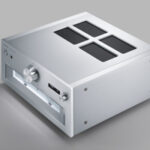
Technics SU-R1000 reference stereo integrated amplifier Review
(April 5, 2024) -
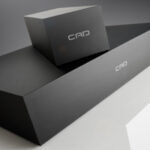
Computer Audio Design GC 1.1 & GC3.1 Ground Control external grounding systems Review
(April 5, 2024) -
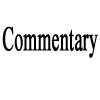
Andy Grove of Audio Note UK on IO LTD
(March 23, 2024) -
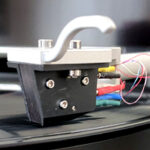
Audio Note UK IO Limited field-coil cartridge system Review
(March 26, 2024) -

EMM Labs MTRX monoblock Input Board Upgrade Review
(March 7, 2024) -

May 2018 Sibelius Violin Concerto concert video via Berliner Philharmoniker Digital Concert Hall app
(February 16, 2024) -
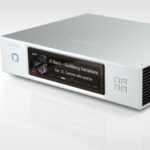
Aurender N20 Ultra High Performance digital output network transport Review
(February 15, 2024) -
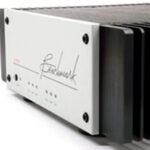
Benchmark Media AHB2 THX AAA stereo amplifiers Review
(January 18, 2024) -

Nelson Pass Interview 2023
(December 6, 2023) -

Interview with singer, pianist Fiona Joy Hawkins and singer, violinist Rebecca Daniel at 2023 CAS
(October 10, 2023) -
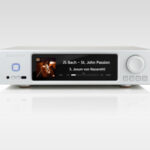
Aurender A20 reference analog output network player Review
(September 27, 2023) -
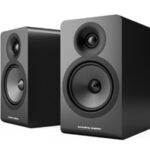
Acoustic Energy AE100² bookshelf speakers Review
(September 11, 2023) -
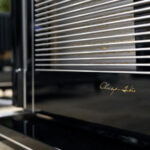
Clarisys Audio Minuet planar ribbon speaker system Review
(August 19, 2023) -

Clarisys Audio Interview
(August 7, 2023) -
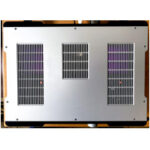
Bricasti Design M21 dual-mono DSD, Ladder and Delta Sigma DAC Review
(December 9, 2023)
-
Categories
-
Amplification Digital Integrated Mono Block Preamplifier Phono Solid State Tube Analog Sources Cartridges Tape Tone Arms Turn Tables Digital Sources Digital Disc Players DACs Music Servers Streaming Music Services
-
Accessories Power Conditioners Room Accoustics Racks & Stands Audio Software Other iPod iPod Speakers iPod Headphones iPod Transports Headphones Over Ear On Ear In Ear Headphone Amplifier
Site Sections
Copyright ©1996-2024 All Rights Reserved.
Popups Powered By : XYZScripts.com

Sometimes the little things irritate me. What little things in particular? Misleading frequency response specifications, an example of which would be, “20 Hz – 25 kHz”. It means very little to real world audio. I could tell you that I am 6’ 5” tall, weigh 175 pounds and can slam a basketball. Of course, that’s misleading information, since it really does not represent me as I am now. I used to weigh 175, but now weigh 215 (Over-reviewing symptom, perhaps? –Ed.), and I could slam the basketball – when I weighed less. To suggest that I can still do so is inaccurate, similar to specs on speakers which suggest they can reach lower frequencies in similar fashion to the way they reproduce higher frequencies. If we loosen the statistics a bit, I can be made to appear as though I can reach well above the rim. If speakers’ statistics are relaxed a bit, they can be made to appear as though they can reach lower frequencies.
When I began to take audiophilia seriously I started paying attention to the specifications of the equipment. I wanted to learn what the practical result of the specs meant. I used many different speakers each having its own quite well defined bass response. I learned through hands-on system building that those seemingly slight changes between the low numbers, for instance “25 Hz” versus “32 Hz” meant sizable performance differences. Seemingly small variances have large impact on performance. Eventually, I concluded that my ideal reference was a speaker that could reach below 25 Hz +/- 3 dB.
What I also learned as I deciphered specs was some companies want to mask their specs as much as reveal them. What do I mean by that? They simply use “loose” or generalized specifications, inexact numbers to give a sense of the direction of the performance level, but no specificity (as in specifications) as to what’s expected. The equivalent in an automobile would be a fuel mileage rating of “30-40 mpg”. While such nebulous indication was at one time rare, it has now become common; glancing through audiophile publications one sees all manner of speaker manufacturers who provide only the barest glimpse at real bass performance. Some very big names and high priced speakers offer specs which are to my mind comical. In one case a ruler flat frequency response was shown from the coveted 20 Hz to 20 kHz – a nearly miraculous response! The only problem was it was measured at well under 80 dB! I do not know of any speaker which would not measure far flatter when at 75-80 dB than at 87-90 dB. Speakers typically do not improve reproducing the signal at lower frequency response as the listening level increases. To crank down the level so as to allow the speaker to operate with far less distortion than it would at levels where distortion would naturally begin to appear is not an impressive specification to me. I wonder how many other manufacturers will begin to do the same, simply alter the measurement criteria to create a result which appears more perfect. Maybe it’s my background in statistics, but this kind of playing with the standard bothers me. The standards are not “written in stone”, so a company could argue that they are doing nothing wrong using an alternative measurement. Yet, many people will not realize what’s happening, that the standards are being changed to accommodate a marketing plan.
Imagine setting out to buy a high performance car, and looking in the dedicated magazine testing it only to see the spec reported as “0-60 mph”, but no indication of the time it took to reach that speed. Would you be impressed? Of course not; an eco-bubble car could do as well as a two seat roadster according to those specs! This is the problem with loose frequency response specs for speakers; it makes the less capable speakers look great, and it makes the great speakers look neigh unto flawless. Neither is true.
One of my basic questions I learned to ask manufacturers and salesmen was, “What is the actual/tight frequency response specification of this speaker?” In other words, I want to know precisely what it is claimed the speaker can do in terms of bass. The “+/-“ coupled with “X dB” is the variance limit, for instance, “40 dB +/- 3 dB”. When an Ad or review shows a spec as “30 Hz to 22 kHz” it means little, especially if that speaker can only do 38 Hz +/- 3 dB! Increasingly I’m seeing specifications at, “+/- 6 dB”, which is little help, and one time spied, “+/-10 dB” – which is a joke (I think it was a computer speaker system). If the variance limit is not established, performance can vary from that number widely! If someone would buy such speakers expecting good, solid bottom-end, they would be vastly disappointed when it wouldn’t materialize! The ridiculous part of the flimsy specs is that manufacturers are setting themselves up for disappointed customers who feel ripped off because they thought they were going to get prodigious bass but were misled.
Sure, it’s good marketing to simply leave out the “+/- 3 dB”. Beginner audiophiles think they’re really sharp to glance at the speaker’s frequency response, and if they see that number near 20 Hz they think, “Man, this speaker rocks!” Some manufacturers today would suggest most people don’t care about it. They’re right, most people don’t care. But audiophiles should, and manufacturers making speakers which are supposed to impress audiophiles should cultivate audiophile knowledge, not dumb it down!
I don’t take quite as seriously a speaker company which doesn’t bother to tell me the hard specs (Sometimes you have to search for it on the website or the manual). I won’t write off that company, but you can bet I’ll approach the speaker with more caution, because I know the manufacturer is not revealing all the information. Sometimes it is because the speaker doesn’t begin to approach the performance indicated by the advertising. A speaker designer who is proud of the bottom-end response will usually be more than happy to display the tight specifications. Ones who are thrilled with their result will sometimes use a more stringent specification of “+/- 2 dB”! That’s a very good spec, as it shows they want sophisticated listeners to know how well the speaker measured.
Occasionally specifications of speaker manufacturers imply that they have found a way to defy the laws of physics. The audiophile should insist on seeing the tight specifications, not generalizations. When those specs are seen, know that even 2-3 dB is perceptually a fair bit, and 5-10 dB is a lot! Look at frequency response among monitors, then move to small floor standing speakers, and finally the “big boys”, the full-range cost-no-object ones, to get a feel for what speakers can do regarding deep bass and what they cannot. The better you understand a speaker’s specs the better informed you will be in terms of making a good purchase. If you don’t have the tight specs, ask for them. And if you don’t get a satisfactory answer, you might want to consider a different product!